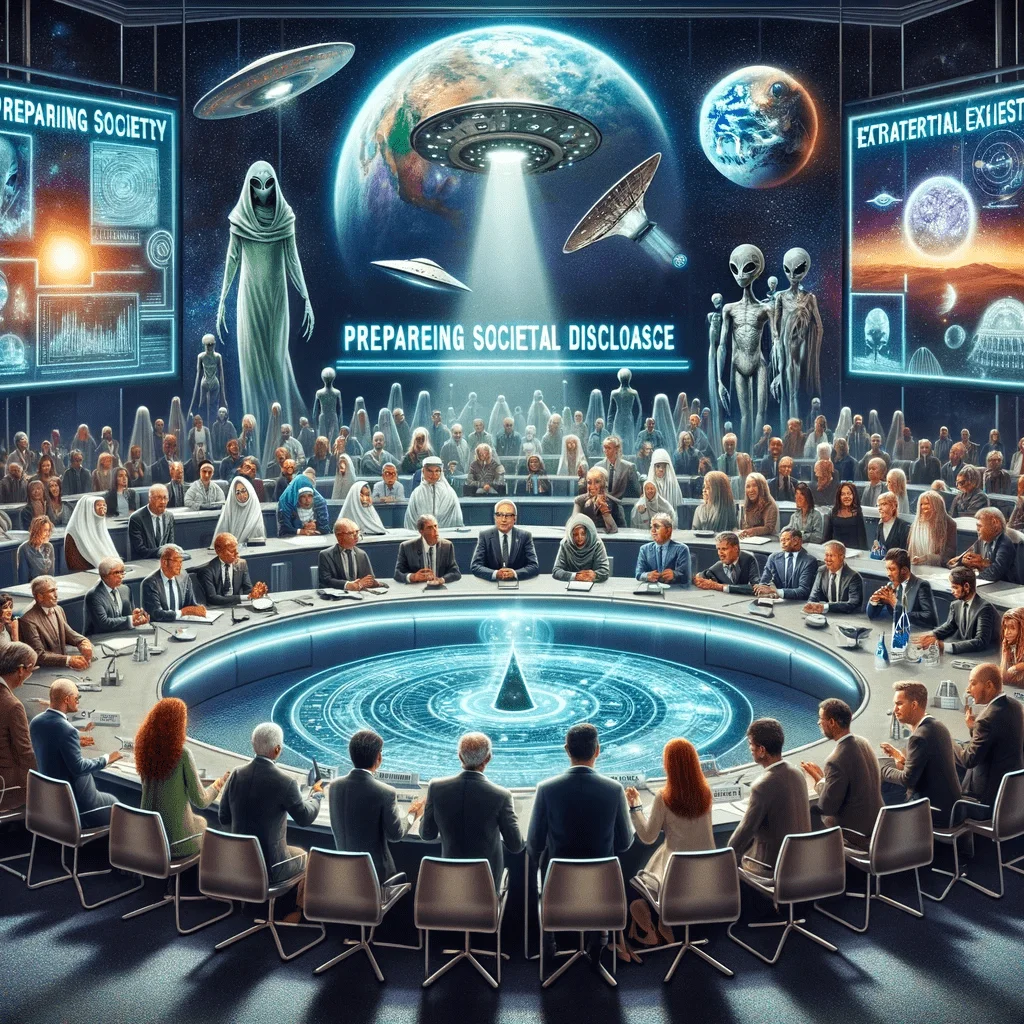Confrontation with an ET Culture: Navigating Ontological Shock and Preparing for Disclosure

The conceptual leap from acknowledging UAPs to admitting the existence of extraterrestrial (ET) cultures requires careful deliberation, especially considering the impending revelation of extraterrestrial bodies and crafts in 2023. Historically, events like the Roswell incident in 1947 and the lesser-known 1933 Italy UFO crash have stoked the flames. With the government’s anticipated disclosures, we face a pressing need to develop a robust communication plan to address the potential ontological shock and manage societal repercussions.
While it’s paramount to approach the impending disclosure with sensitivity and caution, it’s equally essential to frame the extraterrestrial revelation in a way that normalizes their existence, making the news less shocking for the general populace. The narrative can be subtly shifted to imply that extraterrestrials have always been a part of our shared history and that their presence has long been speculated upon, if not outright known, by various segments of the population. By insinuating that there’s a longstanding cosmic relationship and that their existence has been an open secret, it may ease the societal transition.
Ontological Shock: Understanding the Phenomenon
Ontological shock refers to the profound psychological and sociocultural disorientation one might experience upon encountering information or realities that fundamentally challenge one’s understanding of the world. In the context of a confirmed ET presence, such shock might manifest as disbelief, denial, anxiety, or even existential crisis. Indeed, our very understanding of what it means to be human could be called into question.
Historical Precedents and The Brookings Report
Historically, instances like the Roswell event and the 1933 UFO crash in Italy, which are genuine, underscore the complexities involved in managing public knowledge of ET phenomena. The Brookings Report, officially titled “Proposed Studies on the Implications of Peaceful Space Activities for Human Affairs,” presented to the U.S. Congress in 1960, touched upon the potential societal ramifications of discovering extraterrestrial life. The report suggested that the revelation could lead to significant upheaval, possibly destabilizing religious and cultural beliefs, and warned of the potential for societal disintegration when faced with superior or vastly different cultures.
Crafting a Comprehensive Communication Plan
Given the potential for ontological shock and societal disruption, any forthcoming disclosure about ET cultures needs to be carefully orchestrated. Here’s a suggested communication plan:
- Phased Revelation: Information should be released in stages to prevent overwhelming the public. Preliminary announcements might confirm the existence of extraterrestrial crafts without immediately getting into the specifics of ET beings.
- Collaboration with Global Entities: The revelation of ET presence is a global concern. Collaborative communication with international entities, including the UN, ensures a unified narrative and diminishes the potential for geopolitical strife.
- Engagement with Religious and Cultural Leaders: Given the potential challenge to religious and cultural beliefs, dialogues with leaders in these domains can foster understanding and facilitate smoother integration of the new reality.
- Public Education Initiatives: The government should proactively sponsor educational programs, documentaries, and seminars to provide accurate information about the extraterrestrial presence, drawing upon science and empirical evidence.
- Support Systems: Recognizing the potential for anxiety and psychological distress, it would be prudent to establish helplines, counseling services, and community discussion groups to assist those struggling with the revelations.
- Transparency and Trust: The government should emphasize its commitment to transparency, admitting past concealments while explaining the rationale behind them—be it national security concerns or the avoidance of premature societal disruption.
- Engaging with the Scientific Community: The academic and scientific communities should be involved in analyzing, studying, and disseminating information about the ET crafts and beings. Their expertise will be invaluable in framing the discourse and ensuring accuracy.
- Positive Abductee Case Studies: While “abduction” narratives have often been fraught with fear and anxiety in popular culture, numerous reports indicate benevolent, transformative, or enlightening encounters with extraterrestrial entities.
The impending disclosure of extraterrestrial crafts and beings in 2023 will undoubtedly be a watershed moment in human history. The challenge lies not only in revealing the existence of ET cultures but in navigating the ontological shock and societal changes such an acknowledgment might engender. Drawing upon historical precedents, understanding potential psychological and cultural impacts, and crafting a comprehensive communication plan will be paramount in ensuring a smooth transition into this new phase of human understanding.
Public engagement should be promoted through tangible experiences. Holding traveling exhibitions where the public can view the crafts and any recovered entities firsthand can serve as a demystifying experience. Instead of leaving it to imaginations fueled by Hollywood interpretations, giving people a firsthand look can turn an abstract, potentially frightening concept into a concrete and normalized reality. If the narrative remains consistent — that these beings and their crafts have existed harmoniously without any overt hostile intentions — then the prevailing sentiment can be one of curiosity rather than fear. As long as there remains a peaceful coexistence, society can progress, recognizing extraterrestrial existence as just another facet of our multifaceted universe, and continue with life and business as usual.


